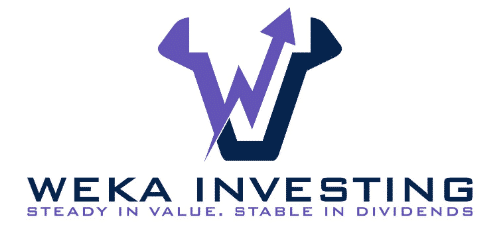Imagine a future where your financial security is assured, where you can rely on a steady stream of income that lets you pursue your dreams and live the life you’ve always envisioned. It’s a future free from the anxieties of unpredictable markets and ever-changing interest rates. This future is possible with the power of bond ladders.
Bond ladders provide a path to financial stability, offering a unique combination of fixed income investments, bond portfolio diversification, and interest rate risk management. With a bond ladder, you can take control of your financial future, making smart decisions that align with your goals and aspirations. It’s a strategy that allows you to weather market ups and downs with confidence, knowing that you have built a solid foundation for long-term success.
In this article, we will delve into the world of bond ladders, uncovering the key benefits, exploring how to build a ladder, and understanding the role of bond quality in the process. We will also discuss the risk-return tradeoff, the impact of a changing interest rate environment, and the tools and resources available to help you navigate this investment strategy. Whether you are a seasoned investor or someone just starting their investment journey, this article will provide you with valuable insights and guidance to create a secure future.
Key Takeaways:
- A bond ladder is a strategy that provides predictable income and helps manage interest rate risks.
- By building a bond ladder, you can diversify your bond portfolio and create a steady stream of cash flows.
- Bond laddering involves purchasing bonds with different maturity dates and spacing them out over time.
- The quality of bonds is crucial in bond laddering, with higher-rated bonds offering greater safety and stability.
- Bond laddering involves a risk-return tradeoff, prioritizing steady income over portfolio growth.
The Benefits of Bond Laddering
Bond laddering offers several benefits to investors. One of the primary advantages is the ability to manage interest rate risk. By spreading out the maturities of bonds in a portfolio, investors are able to minimize the impact of changes in interest rates.
Additionally, bond laddering provides a predictable income stream through the regular interest payments from the bonds. It allows investors to structure cash flows based on the interest payment and maturity dates, ensuring a steady stream of income throughout the year.
“Bond laddering provides a predictable income stream through the regular interest payments from the bonds.”
Another benefit of bond laddering is diversification. By investing in a portfolio of bonds with varying maturities and issuers, investors can reduce the risk associated with investing in a single bond. Diversification helps to spread out the potential credit and default risks, enhancing the overall stability and performance of the bond portfolio.
To better understand the advantages of bond laddering, let’s take a closer look at an example:
John, an investor, wants to build a bond portfolio that provides a predictable income while effectively managing interest rate risk. He decides to create a bond ladder consisting of five bonds with staggered maturities over ten years. Each bond represents a rung on the ladder, and as each bond matures, John reinvests the proceeds into a new bond at the top of the ladder.
| Bond | Maturity Date | Interest Rate |
|---|---|---|
| Bond #1 | Year 1 | 3% |
| Bond #2 | Year 3 | 3.5% |
| Bond #3 | Year 5 | 4% |
| Bond #4 | Year 7 | 4.5% |
| Bond #5 | Year 9 | 5% |
As shown in the table, John’s bond ladder consists of bonds with increasing interest rates, providing the potential for higher returns as he reinvests in new bonds over time.
Bond laddering gives John the advantage of diversification by spreading his investments across different bond issuers and maturities. It helps him manage interest rate risk by not putting all of his investments at the mercy of a single interest rate environment.
The benefits of bond laddering are clear. It offers investors a strategy to generate predictable income, manage interest rate risk, and diversify their bond portfolios. By taking advantage of the unique characteristics of bonds, investors can achieve their financial goals while minimizing risk and maximizing returns.
How to Create a Bond Ladder
Creating a bond ladder involves strategically purchasing individual bonds with different maturity dates to ensure a steady stream of predictable income. It’s a unique investment strategy that offers flexibility and helps manage interest rate risk effectively. Let’s delve into the key steps involved in creating a bond ladder.
Determining Maturity Dates and Bond Types
The first step in building a bond ladder is to select individual bonds with different maturity dates. This allows investors to spread out their investment across various time periods, reducing the impact of interest rate fluctuations. Bonds with longer maturity dates typically offer higher yields, while shorter-term bonds provide more liquidity.
Furthermore, consider the types of bonds that make up your ladder. Municipal bonds, U.S. Treasuries, and investment-grade corporate bonds are common options. Each bond type carries its own level of risk and return, so diversifying your bond ladder with different bond types can help manage risk and optimize returns.
Creating Rungs for Diversification
Next, determine the number of rungs or bonds in your ladder. The number of rungs depends on your investment amount and desired level of diversification. The more rungs you have, the higher the level of diversification, which can help mitigate risk.
In addition to the number of rungs, the distance between each rung is crucial. For optimal performance, try to space the maturities of the respective bonds about equally. This ensures a balanced distribution of maturities throughout the ladder and helps maintain a steady income stream.
Defining the Ladder Height
The height of the ladder refers to the total period covered by the ladder. It depends on your investment goals, risk tolerance, and preferred investment horizon. A longer ladder may offer more potential for higher returns, while a shorter ladder provides quicker access to your investment principal.
To determine the ladder height, consider your financial objectives and the specific timeline for which you intend to build the ladder. Assess your risk tolerance and determine the ideal duration for holding the ladder to align with your investment goals.
By carefully considering the maturity dates, bond types, rungs, and ladder height, you can create a customized bond ladder that suits your investment needs. Let’s move on to the next section to uncover the role of bond quality in laddering and the importance of managing default risk.

The Role of Bond Quality in Laddering
When constructing a bond ladder, the quality of bonds plays a crucial role in ensuring a secure and predictable investment strategy. Bond quality refers to the creditworthiness and default risk associated with a bond issuer. It is essential to prioritize higher-rated bonds to minimize the risk of default and protect your investment.
Bonds with higher credit ratings offer a higher level of safety and stability. AAA-rated U.S. Treasuries and investment-grade corporate bonds are examples of higher-rated bonds that provide greater confidence in their ability to meet interest and principal payments. These bonds are issued by financially sound entities with lower default risk, making them ideal for a bond ladder strategy.
Lower-rated bonds, such as high-yield bonds, carry a greater risk of default. While they may offer higher yields, they also introduce higher default risk into the bond ladder portfolio. Investing in lower-rated bonds increases the likelihood of experiencing inconsistent income and potential loss of principal at maturity.
By prioritizing higher-rated bonds, you can enhance the stability of your bond ladder and reduce the potential impact of default risk. This ensures a steady income stream and preservation of your investment value over time.
“Higher-rated bonds provide a higher level of safety and stability, making them ideal for a bond ladder strategy.”
Here is a hypothetical example to illustrate the importance of bond quality in a bond ladder strategy:
| Bond Rating | Yield | Default Risk |
|---|---|---|
| AAA | 2% | Low |
| A | 4% | Moderate |
| BBB | 6% | High |
| Junk/High-Yield | 8% | Very High |
In the above example, the bond ladder consists of bonds with different credit ratings and corresponding yields. While the high-yield bond offers the highest yield, it also carries the highest default risk. To maximize the stability and reliability of the bond ladder, it would be prudent to focus on the bonds with AAA and A ratings, despite the lower yields. This ensures a balance between risk and return, providing a level of predictability and peace of mind.
By prioritizing bond quality and selecting higher-rated bonds, you can effectively manage default risk and create a more secure bond ladder portfolio. This approach aligns with the goal of steady income and predictable value at maturity.
The Risk-Return Tradeoff in Bond Laddering
Bond laddering is a strategy that offers attractive benefits such as managing interest rate risk and providing a predictable income stream. However, it’s important for investors to understand that bond laddering involves a risk-return tradeoff.
While bond laddering helps mitigate interest rate fluctuations and ensures a steady income, it may not generate exceptionally high returns compared to relevant market indices. This is because the primary focus of bond laddering is to prioritize steady income and protect the principal investment rather than aiming for substantial portfolio growth.
One of the significant advantages of bond laddering is reducing reinvestment risk. By spreading out the maturities of bonds in the ladder, investors can avoid reinvesting all their capital into fixed income products simultaneously. This helps mitigate the risk associated with reinvesting at unfavorable interest rates and potentially allows for better yield management over time.
“Bond laddering is a strategic approach that appeals to risk-averse investors seeking predictable income and the preservation of capital while actively managing interest rate risks.”
However, it’s important to note that bond laddering may limit investors’ ability to take advantage of potentially higher returns in a rising interest rate environment. Given the conservative nature of bond laddering, the strategy may not fully capture the upside potential of increased yields.
It’s crucial for investors to align their investment goals and risk tolerance with the expected tradeoff of bond laddering. If one’s main objectives include steady income and principal protection, bond laddering can be an effective risk management tool. On the other hand, investors seeking higher returns and more aggressive growth strategies may find alternative investment approaches more suitable.
Bond Laddering in a Changing Interest Rate Environment
Bond laddering becomes particularly useful in a changing interest rate environment. If interest rates are rising, the ladder allows investors to reinvest the principal from maturing bonds in higher-yielding bonds, taking advantage of the higher rates. On the other hand, if interest rates are falling, the ladder ensures that investors still have higher-yielding bonds in their portfolio, as the bonds at the end of the ladder will have locked in higher yields. Bond laddering helps investors navigate the uncertainties of interest rate movements and provides a strategy to manage interest rate risk effectively.
“In a rising rate environment, my bond ladder strategy allows me to capture higher yields. As my shorter-term bonds mature, I reinvest the principal into bonds with higher rates. This helps me maximize my returns and adapt to changing market conditions.”
– Jane Smith, experienced bond investor
By utilizing a bond ladder, investors can strategically position themselves to benefit from both rising and falling interest rates. It provides a measure of control and flexibility in managing their bond portfolios. The ability to reinvest principal in higher-yielding bonds during a rising rate environment helps investors capture increased returns. Moreover, the inclusion of higher-yielding bonds at the end of the ladder safeguards against a prolonged period of falling interest rates, ensuring a continued flow of attractive income. Bond laddering functions as a risk management tool, shielding investors from the potential negative impact of rapid interest rate fluctuations.
Investors who prioritize stability and long-term income generation can take advantage of bond laddering to optimize their portfolio’s performance. This approach encourages consistent returns by diversifying bond holdings across various maturity dates, effectively mitigating interest rate risk. Additionally, bond laddering empowers investors to be proactive in adapting to changing market conditions, enabling them to capture opportunities and preserve the value of their fixed income investments.
Benefits of Bond Laddering in a Changing Interest Rate Environment:
- Flexible reinvestment of principal in higher-yielding bonds during rising interest rates
- Inclusion of higher-yielding bonds to maintain attractive income during falling interest rates
- Effective risk management by diversifying bond holdings across different maturities
- Adaptability to changing market conditions to optimize portfolio performance
Bond laddering empowers investors to navigate the dynamic landscape of interest rates with confidence. It offers a comprehensive strategy that balances the pursuit of higher returns and the mitigation of interest rate risk, ensuring long-term financial stability and security.
Bond Ladder Tools and Resources
Investors looking to create and manage bond ladders can take advantage of the various bond ladder tools and resources offered by financial institutions and brokerage firms. These tools provide valuable guidance for self-directed investors in constructing and maintaining their bond ladders, allowing them to effectively manage their bond portfolios and optimize their investment strategies.
With bond ladder tools, investors can customize their ladder based on their investment amount, desired ladder length, and preferred bond types. These tools provide step-by-step guidance on selecting bonds with different maturity dates to ensure a well-diversified portfolio.
Bond ladder tools empower self-directed investors with the ability to manage the cash flows of their bond investments. They offer real-time bond pricing information and yield data, empowering investors to make informed decisions about bond selection and reinvestment options. These tools also provide recommendations and insights into market trends to help investors stay ahead.
By utilizing bond ladder tools, self-directed investors can take control of their bond portfolio management and make informed investment decisions. These tools provide a user-friendly interface and intuitive functionalities, enabling investors to track the performance of their bond ladder and adjust their investments according to their goals and risk tolerance.
| Bond Ladder Tools and Resources | Features |
|---|---|
| Detailed Bond Selection | Access to a wide range of bond options, enabling investors to choose bonds with varying maturities, credit ratings, and yields. |
| Real-time Pricing | Provides up-to-date bond pricing information, allowing investors to make informed decisions based on current market conditions. |
| Yield Data | Offers comprehensive yield data, assisting investors in evaluating potential returns and making strategic investment choices. |
| Portfolio Analysis | Enables investors to analyze the performance of their bond ladder, track income streams, and assess diversification. |
| Reinvestment Options | Provides recommendations on bond reinvestment, helping investors optimize their cash flows and portfolio growth. |
Whether you are a seasoned investor or just starting your journey, bond ladder tools and resources offer valuable assistance in building a successful bond ladder. They empower self-directed investors to take charge of their portfolio management, allowing for customized strategies tailored to individual investment goals, risk tolerances, and market conditions. With the help of these tools, investors can confidently navigate the world of bonds and enhance their portfolio performance.
Considerations for Building a Bond Ladder
When embarking on the journey of building a bond ladder, there are several crucial factors to consider in order to optimize your investment strategy and achieve your financial goals. These considerations encompass diversification, liquidity, risk tolerance, and investment horizon.
Diversification: Spreading Your Wings
Diversification is a fundamental principle of investing that applies to bond laddering as well. By including bonds with varying maturities and types in your ladder, you can spread your risks and increase the potential for stable returns. A well-diversified bond ladder can help offset the impact of any individual bond’s performance on your overall portfolio.
Liquidity: Ready When You Are
Liquidity is another crucial aspect to take into account when building your bond ladder. Ensuring that the bonds you select are easily marketable provides you with flexibility in accessing funds when needed. Liquidity ensures that you have the freedom to make investment decisions or respond to changing circumstances with ease, without being constrained by illiquid assets.
Risk Tolerance: Finding Your Comfort Zone
Understanding and assessing your risk tolerance is vital when constructing a bond ladder. Bond ladder strategies can be customized to fit different risk profiles. Investors with a higher risk tolerance may opt for a longer ladder, increasing the potential for higher returns. On the other hand, those with a lower risk tolerance may prefer a shorter ladder, prioritizing the preservation of capital and stability.
Investment Horizon: A Glimpse into the Future
Consideration of your investment horizon is critical in determining the appropriate bond ladder strategy. Your investment horizon refers to the length of time you intend to hold your bonds before needing the funds. Investors with longer investment horizons can embrace longer ladders, benefiting from higher potential returns over time. Conversely, those with shorter investment horizons may choose shorter ladders to align with their liquidity needs or future financial commitments.
| Consideration | Importance |
|---|---|
| Diversification | ✔️ High |
| Liquidity | ✔️ High |
| Risk Tolerance | ✔️ Medium to High |
| Investment Horizon | ✔️ Medium to High |
By carefully assessing these considerations and aligning them with your financial objectives, you can build a bond ladder that suits your unique needs and sets you on the path to financial success.
Bond Laddering vs. Bond Funds
In the realm of fixed income investing, investors have two main options: bond laddering and bond funds. Both approaches offer unique advantages and cater to different investor preferences and goals.
Bond laddering involves purchasing individual bonds and managing the portfolio independently. This strategy gives investors full control over the selection and management of their bonds. By constructing a bond ladder with staggered maturities, investors can benefit from predictable income streams and the flexibility to take advantage of changing interest rates. Bond laddering allows for portfolio customization and tailored risk management.
Bond funds, on the other hand, pool investors’ money to invest in a diversified portfolio of bonds. These funds are professionally managed by investment experts who analyze the market, make informed investment decisions, and ensure optimal portfolio performance. Bond funds offer instant diversification and access to a wide range of bond options, making them an attractive choice for investors who prefer professional management and a hands-off approach to their investments.
The decision between bond laddering and bond funds ultimately depends on an investor’s individual preferences, investment goals, and comfort level in managing their own portfolio.
Pros and Cons of Bond Laddering
Pros:
- Control over bond selection and management
- Flexibility in constructing a customized bond ladder
- Predictable income streams and cash flows
- Ability to tailor risk management strategies
Cons:
- Requires time and effort for individual bond selection and management
- Higher transaction costs associated with purchasing multiple bonds
- Limited diversification compared to bond funds
- Dependent on individual investor’s expertise and knowledge of the bond market
Pros and Cons of Bond Funds
Pros:
- Professional management by experienced fund managers
- Instant diversification across a broad range of bonds
- Liquidity and ease of buying and selling shares
- Lower transaction costs due to economies of scale
Cons:
- Lack of control over bond selection and management
- Management fees and expenses impacting overall returns
- Potential for capital gains distributions and tax implications
- Limited ability to customize the portfolio to individual preferences
It is important for investors to carefully evaluate their own investment objectives, risk tolerance, and desired level of involvement in portfolio management before deciding between bond laddering and bond funds. Some investors may prefer the control and customization of bond laddering, while others may value the expertise and convenience provided by professional management through bond funds.
Conclusion
Bond ladders are an invaluable strategy for investors looking to manage their fixed income investments effectively. They provide a secure and efficient way to diversify bond portfolios, while also addressing interest rate risk management. By creating a bond ladder with bonds maturing at different intervals, investors can ensure a steady stream of predictable income and take advantage of higher yields when interest rates rise.
The bond ladder strategy offers flexibility in portfolio management, allowing investors to navigate changing interest rate environments with ease. Whether investors choose to self-direct their bond ladder or utilize bond ladder tools and resources, this strategy provides a path towards creating a secure future and enhancing long-term financial stability.
By incorporating bond ladders into their investment approach, investors can optimize their fixed income portfolios, ensuring both income and capital preservation. The bond ladder strategy offers the potential for consistent returns, while still allowing for adjustments in response to market conditions. Additionally, the diversification achieved through a bond ladder helps mitigate risk by spreading investments across various bond types and maturity dates.
For those seeking a reliable and effective strategy for fixed income investments, bond laddering proves to be a valuable tool. By combining interest rate risk management, bond portfolio diversification, and a steady income stream, bond ladders provide a solid foundation for long-term financial success.
FAQ
What is a bond ladder?
A bond ladder is a portfolio of individual bonds that mature on different dates. It helps investors manage interest rate risks and provides a strategy for investing in bonds.
What are the benefits of bond laddering?
Bond laddering offers several benefits, including managing interest rate risk, providing a predictable income stream, and diversifying the bond portfolio.
How do you create a bond ladder?
To create a bond ladder, you purchase individual bonds with different maturity dates and consider the length of the ladder, spacing between maturities, and bond types.
What is the role of bond quality in laddering?
Bond quality is important in laddering. It is recommended to focus on higher-rated bonds to minimize the risk of default and ensure safety and stability in your portfolio.
What is the risk-return tradeoff in bond laddering?
Bond laddering offers a tradeoff between managing interest rate risk and generating potential returns. It prioritizes steady income and principal protection over portfolio growth.
How does bond laddering work in a changing interest rate environment?
In a rising interest rate environment, bond laddering allows you to reinvest maturing bonds in higher-yielding bonds. In a falling interest rate environment, it ensures you still have higher-yielding bonds in your portfolio.
What tools and resources are available for bond laddering?
Various financial institutions and brokerage firms offer bond ladder tools and resources to assist investors in creating and managing bond ladders.
What considerations should be kept in mind when building a bond ladder?
It is important to consider diversification, liquidity, risk tolerance, and investment horizon when building a bond ladder.
What is the difference between bond laddering and bond funds?
Bond laddering involves purchasing individual bonds and managing the portfolio independently, while bond funds pool investors’ money to invest in a diversified portfolio of bonds.
What is the key takeaway of bond laddering?
Bond laddering offers a secure strategy for managing fixed income investments, diversifying bond portfolios, and effectively managing interest rate risks.
Source Links
- https://www.schwab.com/fixed-income/bond-ladders
- https://www.fidelity.com/viewpoints/investing-ideas/bond-ladder-strategy
- https://www.investopedia.com/terms/b/bondladdering.asp

Dr. Lincoln C. Wood teaches at the University of Otago in New Zealand. He is an avid investor and educator. He loves cash flow, income, and dividends when investing. He likes to buy undervalued companies with strong advantages and earnings growth.







